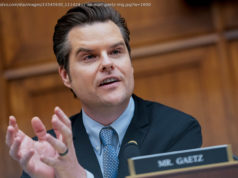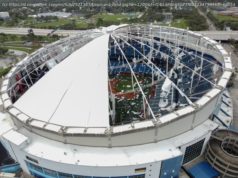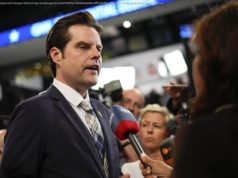There is no silver bullet to address climate change, but history shows us that market approaches alone are not enough – public investment and other, more direct government action are necessary to provide an effective, robust response.
Almost overnight, the idea of a Green New Deal has won over environmental activists and many lawmakers. An all-out national mobilization to decarbonize the economy has a natural appeal to those who see climate change as an immediate, existential threat. But others have doubts. Why can’t markets guide the transition from carbon? Do we really need an expansion of the public sector on the scale of the New Deal or World War II? Can we afford it?
As economists, we think the answer is Yes.
To many economists, the obvious alternative to a Green New Deal is a carbon tax. Make the tax high enough, and businesses and consumers will figure the best ways to reduce emissions. A group of eminent economists from both parties, including Nobel Laureates and former Federal Reserve chairman, recently endorsed this approach to climate change. They argue that markets, rather than regulation or public spending, are best at spurring investments in clean energy.
Carbon pricing definitely has a role to play, but market approaches have limits. Markets are effective at allocating resources when the required adjustments are small and the outcomes clear and immediate. Yet, there’s a reason that during World War II, the government built aircraft factories and allocated scarce materials like steel and rubber through the War Production Board. Closer to home, there’s a reason that large businesses have professional managers to plan their operations, and don’t rely on internal markets.
The limits of leaving large-scale planning to markets should be even clearer today, especially after the experience of the housing bubble and crash, which demonstrated a colossal failure of financial markets to direct investment to productive uses. We shouldn’t count on the same financial system that so mismanaged the housing market to guide the shift away from fossil fuels on its own.
Instead, the government needs to mobilize our collective productive capacities through a mix of tools: directly through public investments and credit policy; through regulations that enforce key climate goals, in the same way that harmful chemicals are banned and not just taxed; and through taxes and subsidies that ensure that what consumers and businesses pay for goods and services reflects their true social cost.
Perhaps the most common question about the Green New Deal approach is “How do we pay for it?” That is, where will the money come from for new public spending? And where will the real resources come from, for both public and private investment in decarbonization?
Supporters of the Green New Deal, like most Americans, also favor higher taxes on very high incomes and wealth. But these will not cover all the increased public spending. So, yes, the government will borrow more, but this shouldn’t worry us.
In recent years, there has been a remarkable shift among economists on the dangers of high public debt. The big runup in U. S. debt over the past decade has not been accompanied by any of the disasters that we used to fear—runaway inflation, sky-high interest rates. Neither has rising debt in Japan, which has now reached 250 percent of GDP with no obvious ill effects.
In a world of low interest rates, which seem to be here for the foreseeable future, there is no danger of a runaway debt spiral. The idea that low interest rates make deficits less worrisome has been forcefully argued by people like former IMF chief economist Olivier Blanchard and former Treasury Secretary Lawrence Summers and Council of Economic Advisors Chair Jason Furman.






